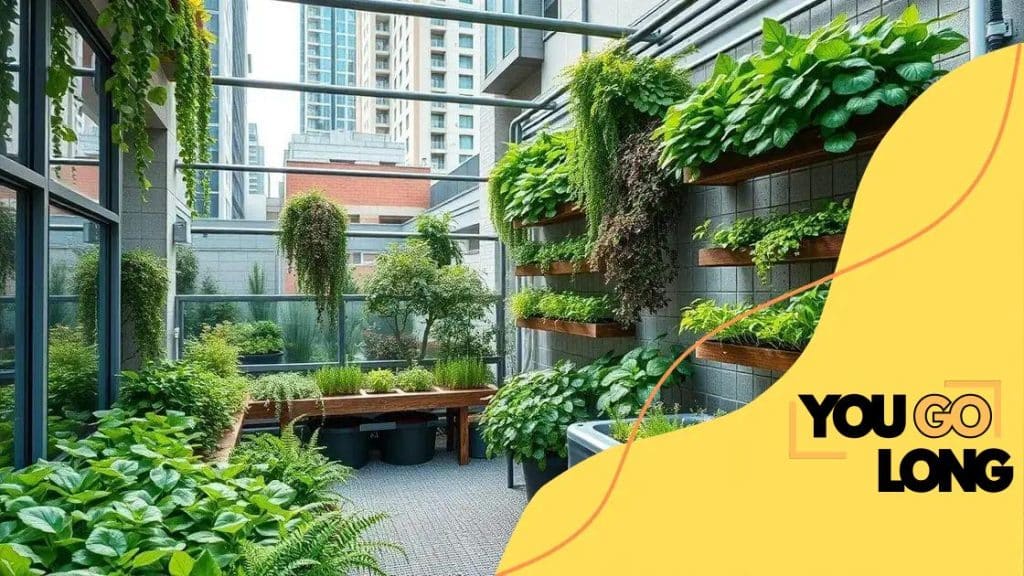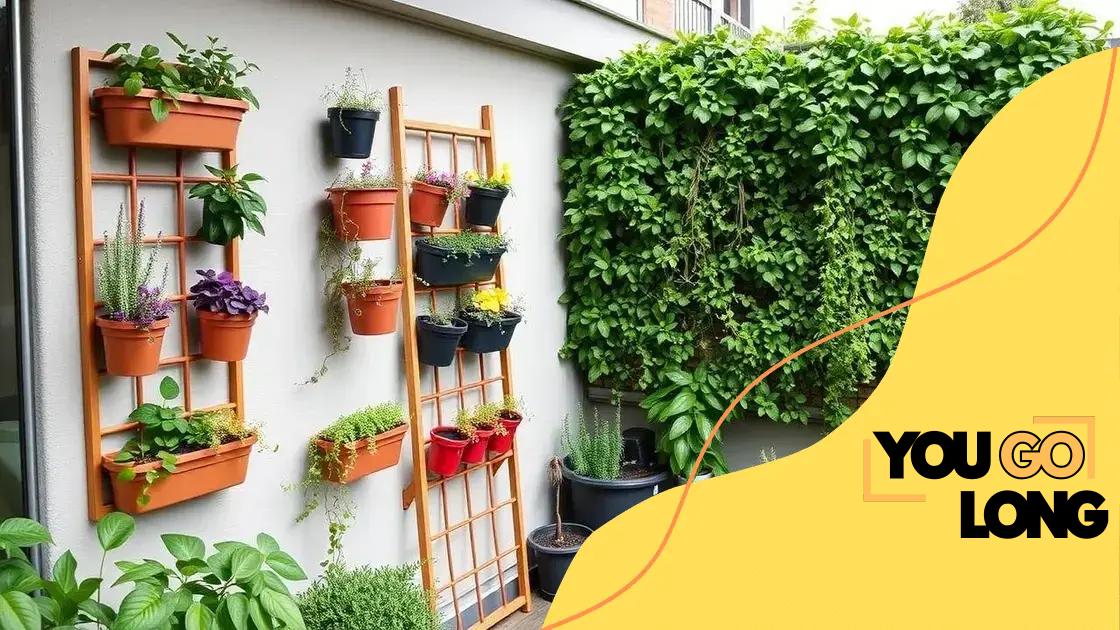Gardening trends for 2025: Urban sustainability at its best

Advertisement
Gardening trends for 2025 are all about thinking smarter, greener, and more connected. If you’ve ever dreamed of growing your own food or creating a peaceful green space in the middle of a bustling city, now’s the time to dig in.
The latest innovations are more than just decorative, they’re reshaping how we live and eat. From tech-powered tools to community-driven gardens, 2025 invites you to plant with purpose and grow with intention.
Whether you’ve got a balcony or a backyard, these trends offer exciting, accessible ways to make your space greener, your meals fresher, and your community stronger. Let’s explore what the future of gardening has in store.
Rising popularity of vertical gardens in urban areas
The gardening trends for 2025 are seeing a major surge in vertical gardens as cities get denser and outdoor space shrinks. These upright green spaces aren’t just beautiful, they’re becoming essential for healthier urban living.
Vertical gardens bring life to bare walls, purify air, and reduce urban temperatures. They also offer a refuge for biodiversity, supporting birds, insects, and pollinators in the city’s concrete jungle.
Advertisement
Designed with modular systems, vertical gardens can fit balconies, patios, and even kitchen walls. This flexibility makes them ideal for apartment dwellers who crave a personal green escape without needing a backyard.
Benefits of vertical gardens
One key benefit of vertical gardening is improved air quality. The plants absorb pollutants and produce clean oxygen, creating a fresher and healthier environment both indoors and outdoors.
They also insulate buildings, helping to manage indoor temperatures and reduce energy costs. This is especially valuable in urban heat islands where concrete traps heat.
Advertisement
Moreover, vertical gardens add beauty and serenity to crowded spaces, increasing property value and encouraging mental well-being, making them a smart and stylish choice for urban gardeners.
Types of vertical gardens
There are several creative ways to build vertical gardens depending on your space and style. Wall-mounted planters are a top choice for herbs, flowers, and succulents, offering color and utility in compact form.
For larger installations, trellises support climbing plants like tomatoes, beans, or ivy, turning bare walls into lush tapestries of green. These setups also allow better air circulation for plant health.
Hydroponic vertical systems are gaining popularity too, using nutrient-rich water instead of soil. These systems are efficient, space-saving, and ideal for growing leafy greens and herbs indoors.
How aquaponics is changing small space gardening
Among the most exciting gardening trends for 2025, aquaponics stands out for its innovation and sustainability. It’s a perfect match for those wanting to grow food in tight spaces with minimal waste.
By combining fish farming with hydroponic gardening, aquaponics creates a balanced system where both plants and aquatic animals thrive. It’s eco-friendly, compact, and perfect for city dwellers.
Urban gardeners are turning balconies and rooftops into self-sufficient food systems. With the right setup, you can harvest vegetables and fish from a single ecosystem right at home.
The basics of aquaponics
Aquaponics works by turning fish waste into nutrients for plants. In turn, the plants purify the water, which is then recirculated back to the fish, a closed loop that mimics nature.
The main components include a fish tank, grow beds, water pumps, and biofilters. Together, they maintain balance and keep both the fish and plants healthy without chemicals.
This method uses up to 90% less water than traditional gardening and can be adapted to almost any size, making it ideal for balconies, garages, or kitchen corners.
Benefits for small space gardening
One of the biggest advantages of aquaponics is its efficiency. You get two food sources, plants and fish, with less space, water, and effort than conventional gardens require.
These systems allow year-round gardening, regardless of outdoor climate. Many use artificial grow lights to ensure steady production of vegetables even in winter.
It’s also a great educational tool. Families and schools are embracing aquaponics to teach kids about sustainability, biology, and self-sufficiency, all from a single compact unit.

Sustainable materials for modern gardening solutions
Gardening trends for 2025 are rooted in eco-conscious choices, and one of the biggest shifts is the move toward sustainable gardening materials. These choices reduce waste while enhancing performance.
More gardeners are opting for compost, bamboo, hemp, and recycled materials instead of plastics or chemicals. These products break down naturally or reduce the need for synthetic inputs.
Incorporating green materials is not just better for the environment, it also helps your plants thrive. Stronger roots, healthier soil, and fewer toxins lead to a more productive and beautiful garden.
Some types of sustainable materials
Bamboo is a standout favorite, lightweight yet sturdy, ideal for trellises, edging, or plant supports. It’s fast-growing and renewable, making it perfect for sustainable designs.
Recycled plastic is another eco-smart material, repurposed into pots, raised beds, and garden furniture. It’s durable, weather-resistant, and keeps waste out of landfills.
Compost and hemp products enrich the soil and improve drainage. Hemp is particularly versatile, used in biodegradable pots, mulch, and erosion-control fabrics that decompose naturally over time.
Using sustainable materials
Eco-conscious materials contribute to a healthier garden and a healthier planet. They reduce carbon emissions and keep harmful chemicals out of your soil and water.
They also promote biodiversity. Natural mulch and compost invite earthworms, beneficial microbes, and pollinators, helping plants grow strong and resilient.
Finally, these materials align with a deeper philosophy of stewardship. Gardeners using sustainable products often report a stronger connection to their space, their plants, and the planet.
Community gardens as a solution to food deserts
Gardening trends for 2025 go beyond private backyards, community gardens are playing a key role in fighting food insecurity and revitalizing underserved neighborhoods.
In areas known as food deserts, where access to fresh produce is limited, shared gardens provide a powerful solution. They transform vacant lots into lush, edible oases.
By growing food locally, these spaces improve nutrition, lower food costs, and bring neighbors together. They’re not just gardens, they’re platforms for change and education.
What are community gardens?
Community gardens are plots of land where residents grow crops together. Each person tends their own section or helps care for shared beds, depending on the structure.
These gardens can pop up almost anywhere, in schools, parks, rooftops, or repurposed land, and often include composting stations, tool sheds, and seating areas.
The result is more than just food. They foster community, provide safe outdoor space, and allow people to reconnect with nature in even the most urban settings.
Benefits of community gardens
Access to fresh fruits and vegetables improves public health, especially in lower-income neighborhoods where grocery stores are scarce. Community gardens fill that gap.
They also reduce social isolation. Gardening together builds trust, encourages cultural exchange, and strengthens local ties.
On top of that, many gardens serve as outdoor classrooms. Children and adults alike learn about growing food, sustainability, and nutrition, skills that empower communities to be more self-reliant.
Tech innovations in gardening for the future
Among the most forward-looking gardening trends for 2025 are tech innovations that are making gardening easier, smarter, and more responsive to climate challenges.
From sensors that monitor soil conditions to fully automated watering systems, technology is helping even beginner gardeners succeed. The result? Higher yields with less guesswork.
Whether you have a tiny planter or a sprawling backyard, smart tools are bringing professional-level precision to personal gardening. It’s a green revolution powered by data.
Smart gardening tools
Soil sensors alert you when your plants need water, avoiding over- or under-watering. These gadgets analyze pH, temperature, and moisture for optimized care.
Automated irrigation systems run on timers or moisture triggers. They water only when needed, reducing waste and keeping plants consistently hydrated.
Plant-care apps now use AI to diagnose plant problems, track growth, and suggest fertilizers. Some even sync with smart devices for hands-free garden management.
Drones and gardening
Drones are no longer just for large farms, they’re entering the home gardening space too. They’re especially useful for surveying large yards or monitoring plant health from above.
In commercial gardens, drones apply organic treatments, track crop development, and detect pests early. These insights help farmers adjust care quickly and efficiently.
For tech-savvy gardeners, drones also enable experimental setups like remote seed planting or aerial photo journaling, blending hobby with high-tech innovation.
In conclusion, the future of gardening is bright and filled with possibilities. With the rise of technology, sustainable practices, and community engagement, we can face challenges like food deserts and climate change.
By embracing innovations such as smart tools and community gardens, we empower ourselves to grow healthy food while building strong communities. Let’s continue to explore these gardening trends and make a positive impact on our environment!
FAQ – Frequently Asked Questions about Gardening Innovations
What are community gardens?
Community gardens are shared spaces where residents grow fruits, vegetables, and flowers together, promoting fresh food access and community engagement.
How do smart gardening tools work?
Smart gardening tools use sensors and apps to monitor plant health, soil moisture, and growth conditions, helping gardeners make informed decisions.
What are the benefits of using sustainable materials in gardening?
Sustainable materials reduce environmental impact, enhance soil health, and promote biodiversity while helping gardeners create eco-friendly spaces.
How can technology assist in urban gardening?
Technology such as drones and automated irrigation systems improve efficiency, help monitor plant health, and enable urban gardeners to maximize limited space.





